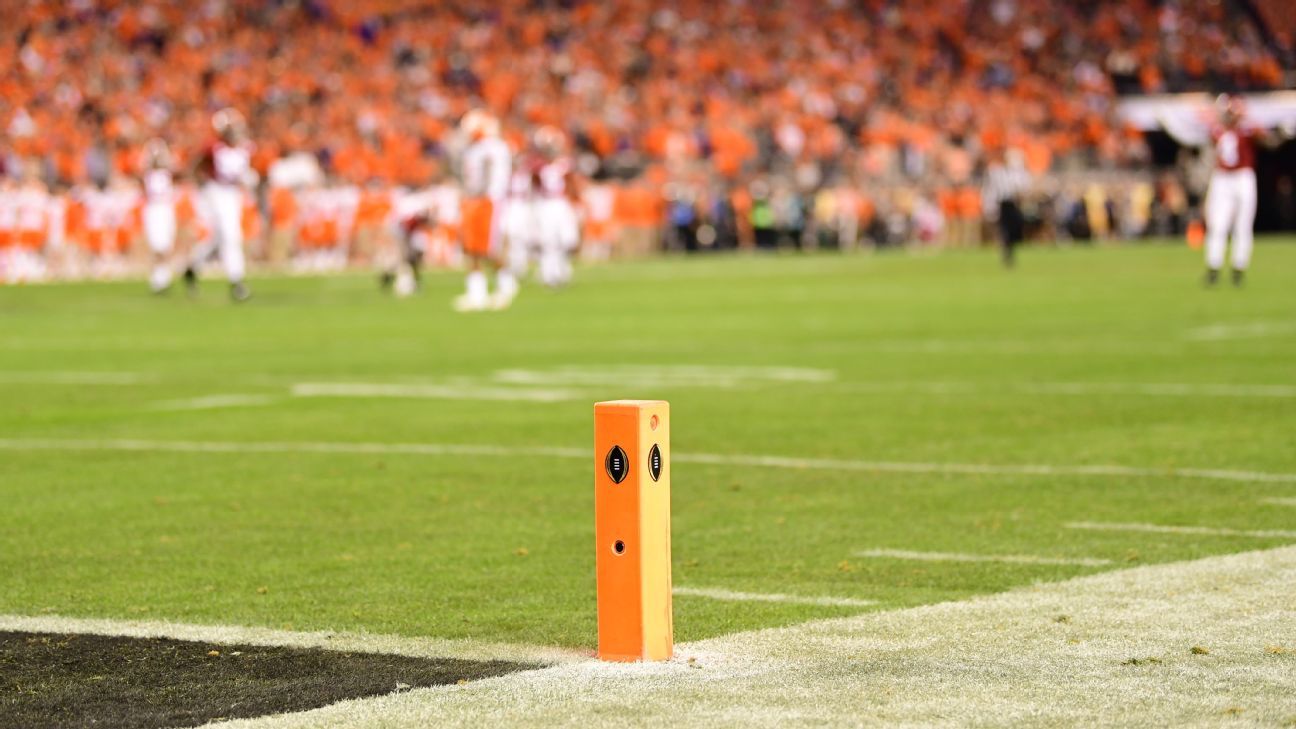If the NCAA Football Rules Committee gets its wish, college football teams will be required to run two-point plays after scoring a touchdown in the second overtime — and would run nothing but alternating two-point plays if the game goes three overtimes or longer.
Under the proposed rules changes that would take effect this season, teams would no longer start offensive possessions at an opponent’s 25-yard line after the second overtime.
Currently, teams are required to run two-point plays after a touchdown if a game reaches three overtimes and would then run alternating two-point plays once a game reaches the fifth overtime.
The rules changes must be approved by the NCAA Playing Rules Oversight Panel, which is scheduled to discuss the recommendations on April 22.
Stanford coach David Shaw, chairman of the NCAA Football Rules Committee, told ESPN on Friday that the proposed rules changes are designed to shorten games and limit the number of plays from scrimmage to protect players’ health.
Shaw said the committee first started discussing changing overtime rules after Texas A&M’s 74-72 seven-OT victory over LSU on Nov. 24, 2018.
“We all really looked at that LSU-Texas A&M game a couple of years ago,” Shaw said. “That’s what prompted the change for last season. Looking at it again this year, and this kind of came through the AFCA and a lot of coaches, we wanted to continue to find a way not to add so many more plays to an already long and draining football game.”
Shaw said head coaches who participated in a survey conducted by the American Football Coaches Association overwhelmingly supported the proposed rules change.
“We had an overtime game against UCLA this year, and [Bruins coach] Chip Kelly went for two after the second overtime, and I didn’t blame him one bit,” Shaw said of the Cardinal’s 48-47 win in two overtimes. “We’d been playing for a lot of plays and we’d had a couple of injuries on both teams. It was time to say, ‘Hey, you know what, we’ll either make this and win or not get it and lose and go on.’ This is a safety issue, this is a length-of-game issue and a number-of-plays issue.”
Shaw said the NCAA Football Rules Committee also has proposed introducing a postgame mechanism that would allow teams to submit video evidence if it feels an opponent was feigning injuries to stop the clock or slow down a team’s momentum.
“This was the biggest discussion we’ve had [on feigning injuries] since I joined the rules committee,” Shaw said. “It’s tough. What we’re talking about is ethical conduct and unethical conduct by coaches trying to influence the game. It’s hard to put on the officials and it’s hard to put something in play for that small percentage of unscrupulous coaches without punishing everybody else.”
Under the committee’s proposal, the video would be reviewed by someone such as the national coordinator of officials.
“We have so many camera angles and TV angles now,” Shaw said. “The last few years, we’ve been able to see some things that if they didn’t turn your stomach so much they would be comical. We’ve seen coaches give signals and guys just drop. We’re trying to find a way to stop that practice.
“If a player is injured, they have to get him off the field and stop the clock. We don’t ever want to change that. We don’t want to entice anybody to do something that’s not safe. We don’t want an injured guy staying on the field because he doesn’t want to get off or is trying to play the next play because he doesn’t want the clock to stop. Those are difficult things. But if you were playing a game and you think someone was doing something unethical to harm you on gameday, now we’re going to give you an avenue to appeal to a neutral third party that can take a look at this and hopefully take the appropriate steps.”
According to Shaw, the proposed postgame review still has to be reviewed by athletics directors, conference commissioners and other NCAA bodies like the Football Oversight Committee before it’s implemented.
“It’s something we all see as unethical conduct,” Shaw said.
The committee also discussed rules regarding blocking below the waist, but will wait to address potential changes until after collecting data from the 2021 season.
“We want to take a good holistic view of blocking below the waist from top to bottom–at the line of scrimmage, beyond the line of scrimmage, outside in space–and really decide what is best for the game and the health and safety of those playing the game,” Shaw said. “That will make a lot of people anxious, particularly the academies we have so much respect for and that rely on that form of blocking. But it’s also where a lot of injuries come from, a lot of knee and ankle injuries. Without saying this is what we’re doing and why, we want to take a good look at the real data over time and decide what is best for our game going forward.”
